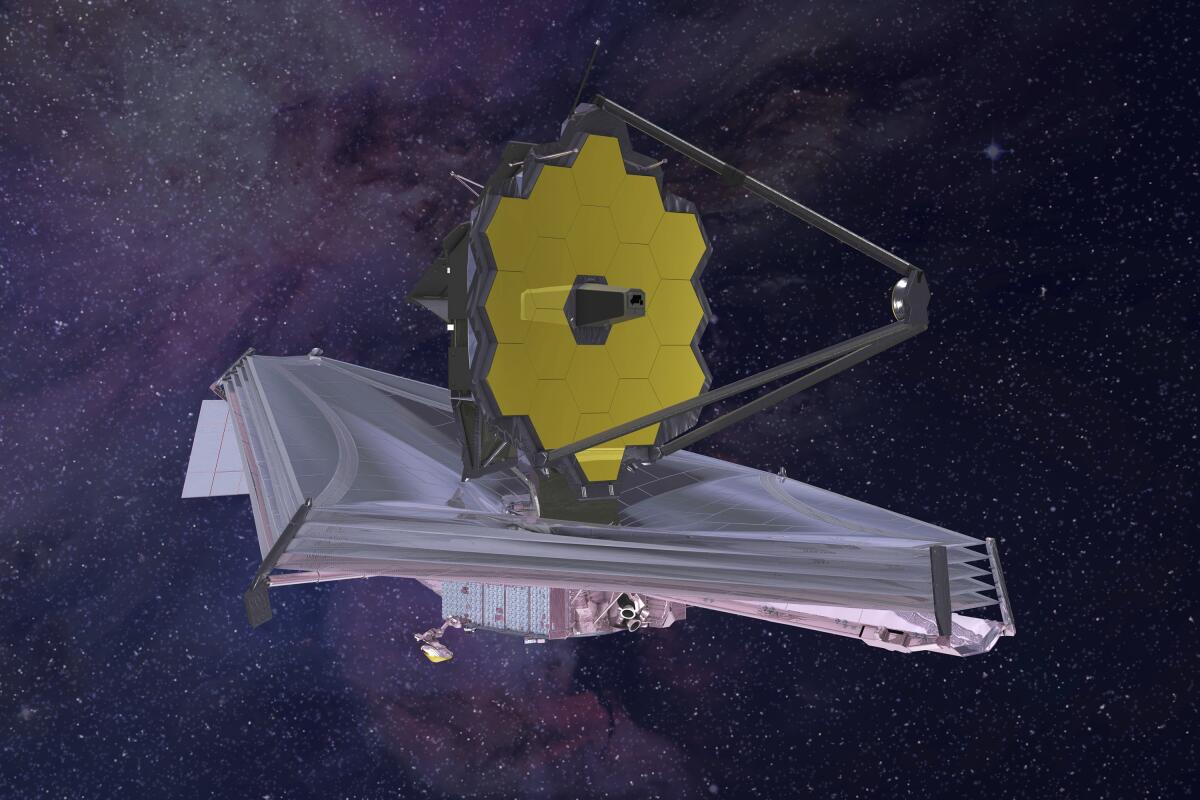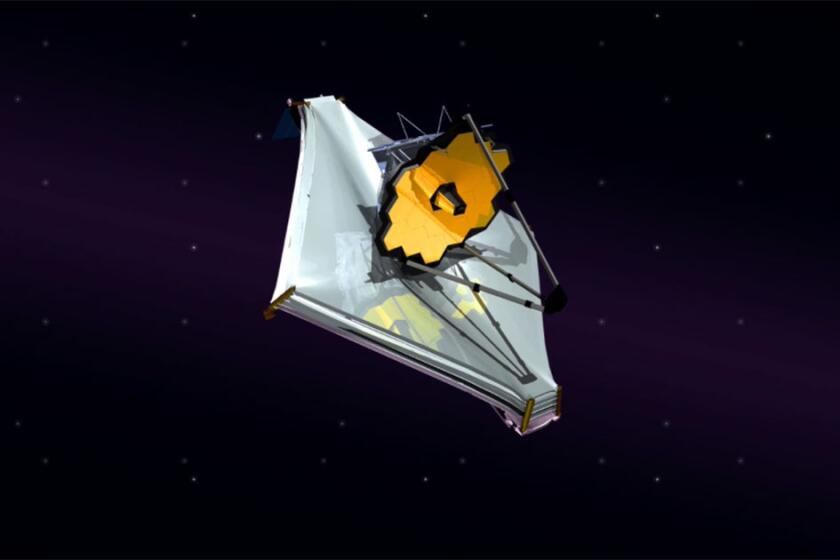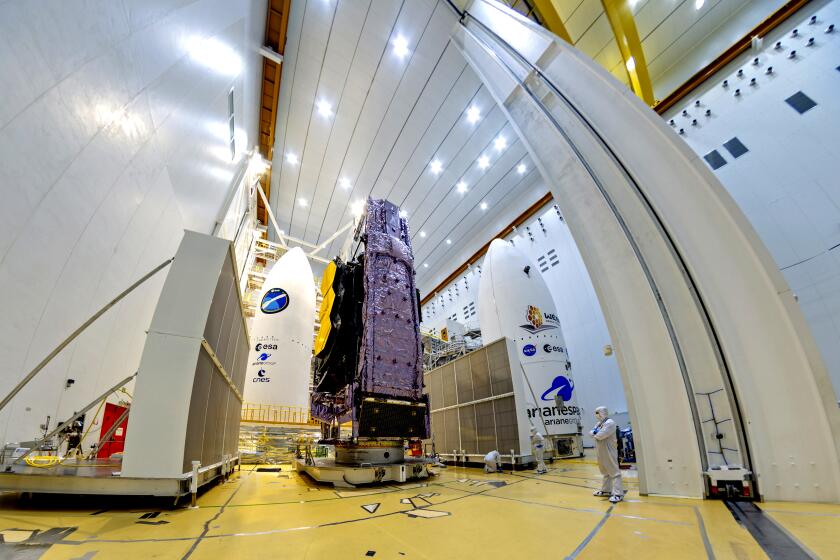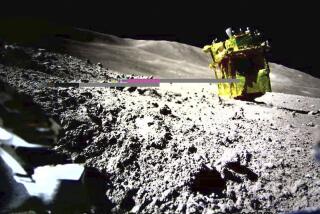James Webb Space Telescope reaches final stop a million miles away

- Share via
CAPE CANAVERAL, Fla. — The world’s biggest, most powerful space telescope reached its final destination 1 million miles from Earth on Monday, a month after it lifted off on a quest to behold the dawn of the universe.
On command, the James Webb Space Telescope fired its rocket thrusters for nearly five minutes to go into orbit around the sun at its designated spot, and NASA confirmed the operation went as planned.
The mirrors on the $10-billion observatory still must be meticulously aligned and the infrared detectors sufficiently chilled before science observations can begin in June. But flight controllers in Baltimore were euphoric after chalking up another success.
“We’re one step closer to uncovering the mysteries of the universe. And I can’t wait to see Webb’s first new views of the universe this summer!” NASA Administrator Bill Nelson said in a statement.
The telescope will enable astronomers to peer back further in time than ever before, all the way back to when the first stars and galaxies were forming 13.7 billion years ago. That’s a mere 100 million years from the Big Bang, when the universe was created.
Besides making stellar observations, Webb will scan the atmospheres of alien worlds for possible signs of life.
The telescope will be able to peer into the farthest reaches of space. The data it collects will allow scientists to better understand the formation of stars and galaxies.
The high-flying drama began within days of liftoff.
A sunshield as big as a tennis court stretched open on the telescope in early January, 1 1/2 weeks after the Christmas Day launch from French Guiana. The observatory’s gold-coated mirror — 21 feet across — unfolded a few days later.
Monday’s thruster firing put the telescope into orbit around the sun at the so-called second Lagrange point, where the gravitational forces of the sun and Earth balance. The 7-ton spacecraft always faces Earth’s night side to keep its infrared detectors as frigid as possible.
At 1 million miles away, Webb is more than four times as distant as the moon.
The James Webb Space Telescope launches to space Christmas Day, the culmination of two decades of work: ‘It feels like we sprinted a marathon.’
Considered the successor to the Hubble Space Telescope, which orbits 330 miles up, Webb is too far away for emergency repairs. That makes the milestones over the last month — and the ones ahead — all the more critical.
Spacewalking astronauts performed work five times on Hubble. The first operation, in 1993, corrected the telescope’s blurry vision, a flaw introduced during the mirror’s construction on the ground.








